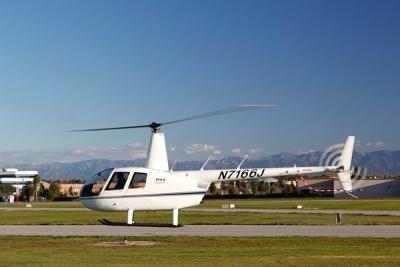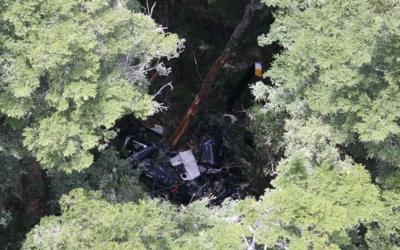On Official List Of 'Most Pressing Concerns' Following 18 Fatalities Associated With The Aircraft
The Transport Accident Investigation Commission (TAIC) of New Zealand has placed Robinson helicopters on its list of "Most Pressing Concerns" due to a high number of fatal accidents associated with the aircraft.

According to the TAIC, there are around 300 Robinson helicopters registered in New Zealand comprising around 40% of the total helicopter fleet.
Since 1996, the Commission and the Civil Aviation Authority (CAA) have investigated 14 “mast bumping” accidents involving Robinson helicopters, costing the lives of 18 people.
Mast bump is contact between an inner part of a main rotor blade or a rotor hub and the main rotor drive shaft or “mast”. The outcome is usually catastrophic.
“We understand what mast bumping is, but it is often difficult to determine exactly what happened to cause the mast bump,” said Commissioner and spokesperson Stephen Davies Howard.
“We know the condition results when Low-G occurs – a bit like when you leave your stomach behind when going over a hump on a country road – or from an inappropriate control input. Low-G can be caused by turbulence, but it is not normally a condition that causes concern beyond discomfort,” said Commissioner Howard.
“However, it can lead to mast bumping which too often has fatal consequences in Robinson helicopters with their rotor head design.”
The Commission had also identified that the rate of Robinson helicopter in-flight break-ups accidents in New Zealand had not been significantly reduced by the adoption of FAA measures intended to help prevent such accidents.
“We also found that the format of the Robinson flight manuals and terminology did not draw enough attention to safety critical instructions and conditions that could result in serious injury or death.
“Four of our earlier recommendations made as a result of Robinson mast bump accidents have yet to be actioned. We therefore remain concerned that there is a real risk that we will see more of this type of accident.”

Radio New Zealand reports that the most recent such accident occurred in February, 2015. An R44 broke up in flight, fatally injuring both occupants of the aircraft. In its official report, the TAIC said it has noted "many other fatal mast-bump accidents involving Robinson helicopters in New Zealand and around the world that have gone largely unexplained".
"It is difficult to identify the lessons from an accident and make meaningful recommendations to prevent similar accidents if the underlying causes cannot be determined."
New Zealand's Civil Aviation Authority (CAA) said that it has mandated safety awareness training for all R22 and R44 pilots. The R66 was not included on the watch list.
A spokeswoman for Robinson Helicopter said that the aircraft are safe "if flown according to manufacturer's guidelines.
"CAA analysis indicates that improved pilot training and increased experience is the solution," the company said. "CAA has funded Robinson Helicopter Company training experts to conduct the trainer courses in New Zealand to ensure pilots fly the aircraft within their recommended limits."
(Image of 2015 accident provided by New Zealand police. Other image from file)
 ANN's Daily Aero-Term (04.28.24): Airport Marking Aids
ANN's Daily Aero-Term (04.28.24): Airport Marking Aids Aero-News: Quote of the Day (04.28.24)
Aero-News: Quote of the Day (04.28.24) ANN's Daily Aero-Linx (04.28.24)
ANN's Daily Aero-Linx (04.28.24) Aero-News: Quote of the Day (04.29.24)
Aero-News: Quote of the Day (04.29.24) ANN's Daily Aero-Linx (04.29.24)
ANN's Daily Aero-Linx (04.29.24)




